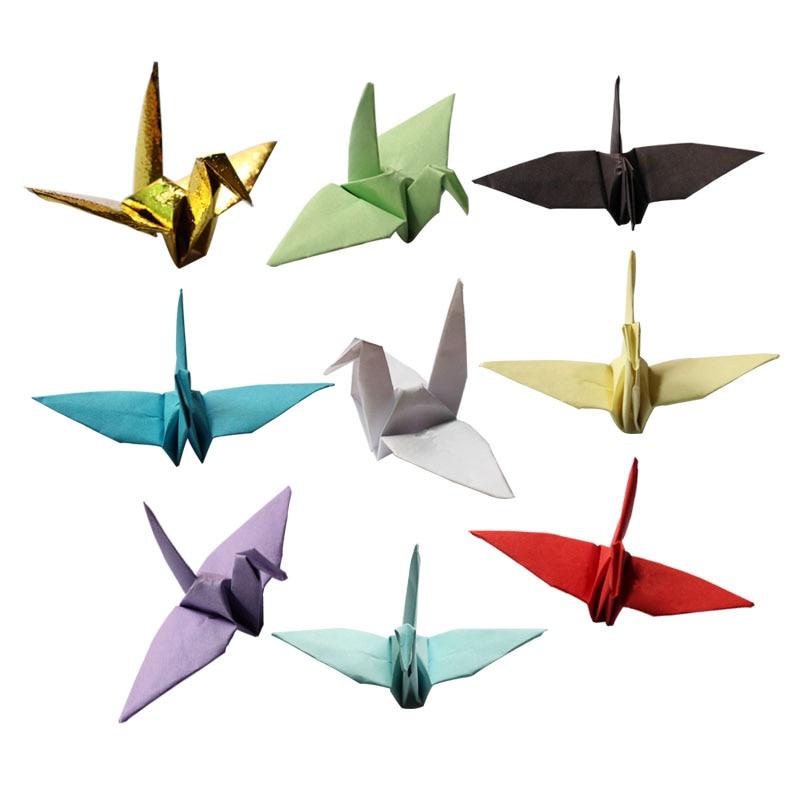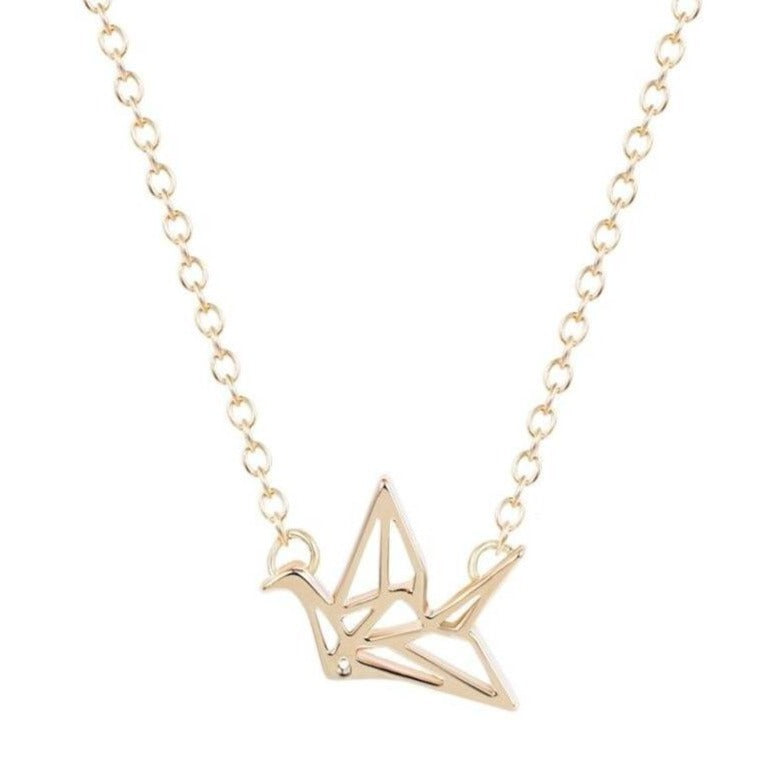Sadako Sasaki: the Legend of the 1000 Cranes (and Origami)
If you could have one wish, what would it be?
According to Japanese custom, folding 1,000 paper cranes grants you a special wish. Some versions of this tradition tell you that the realization of this ambitious project would rather offer you eternal happiness, or even luck for you and your loved ones.
In this article, we will talk about the symbol of the crane in Japan, a strange custom linked to the art of origami and the life of Sadako Sasaki, a little girl of exceptional courage.
In short, if you have a particular wish in mind, a problem to solve or you simply want to live a long and happy life, today's topic should please you.
Contents :

The crane in Japanese culture
The crane has long been a symbol of good health, longevity, truth and fidelity in Asian cultures. The graceful, almost regal appearance of these elegant, elegant birds reflects their high status as animal messengers.
Ancient Chinese writings describe them, for example, as always behaving as examples of goodness, incorruptible and naturally honest. So, being compared to a crane is one of the highest compliments anyone can receive.
If you are compared to the symbol of the crane in Japan for example, this means that you are an upright and exalted person whose morality impresses those around you.
In the same kind of idea, someone can be compared to “a crane standing among chickens” in order to show their superiority, superior class and aura.
The figure of the crane in Asia, however, represents much more than simple compliments. There is also a very specific field where the animal still shines: origami.
When we think of this Japanese art, a paper crane folding quickly comes to mind. Look at how these folded crane origami exude calm and peace, and you will undoubtedly understand how it is done.
Origami is an interesting practice but it certainly requires a good amount of patience. This corresponds (as if by chance…) to one of the qualities of the crane.
This animal is in fact known to only mate with one partner throughout its life. Thus, origami like the symbol of the crane in Japan are two strong symbols of loyalty and moral value.
Crane origami is so widespread that it even has a special name, the Japanese speak of “orizuru”.
Loyalty, nobility, beauty, the lucky origami of the crane is certainly a subject that deserves our attention.
Senbazuru, or origami of 1000 cranes
At the end of the 16th century in Japan, one of the first books on origami was published. Its title, evocative to say the least, was: “How to fold 1,000 cranes”.
The easy instructions it contained and the beauty of the final folding ensured the popularity of crane origami for centuries.
This practice of folding 1000 cranes is called “senbazuru”. Often, the small folds are hung on ropes which then magnificently decorate living rooms and restaurants.
The different colors of the paper used and the patterns of some make it a bright and joyful decoration. The harmonious shape of the crane origami adds an even more lively side.
Yes, Japanese traditions are numerous and each one more interesting than the other. If you are tempted to learn more, take a look at our collection dedicated to Japanese culture, you will not be disappointed.
We are entitled to ask ourselves a question: “But why this number? Where does the legend of the 1000 cranes come from? »
The answer is actually quite simple. It is said in Japanese folklore that the crane has a lifespan of 1000 years.
By a sort of magical effect (you are free to believe it or not, the fact is that the Japanese think it is possible), succeeding in folding 1000 origami cranes in one year would place us under the blessing of this animal, thus giving us the opportunity to make a wish.
Although the idea seems attractive, creating the legend of the 1000 cranes is not an easy project and more than one has lost teeth. Some people even decide to get together to try to make a senbazuru.
Because it can bring together a large number of individuals (1000 to be exact), it is often an opportunity to raise public awareness of certain causes.

Sadako Sasaki and the wish for world peace
Sadako Sasaki: This name may not mean anything to you, but once you hear her story, you will understand why millions of Japanese people consider her a true hero.
If you are impatient and can't wait, here is the Wikipedia page dedicated to little Sadako Sasaki. If you are more patient, continue reading and let us tell you about it.
As we have just seen, the senbazuru, or legend of the 1000 cranes, is a folk tradition anchored for centuries in Japanese culture. However, it was through the story of Sadako Sasaki that the phenomenon became national, even downright global.
This little girl from the Hiroshima region was only two years old when the atomic bomb was dropped by the Americans during the Second World War.
Poisoned, the little girl developed leukemia around the age of twelve.
Inspired by the legend of senbazuru, she began to fold cranes. We could then say to ourselves that his dearest wish was to regain health (which would still be quite legitimate!).
It was nothing of the sort...
Little Sadako Sasaki's wish, what she wanted from the bottom of her heart, was a return to peace for the whole world.
Planetary peace, that’s what she intended to ask for.

The bombing of Hiroshima
Sadako Sasaki's story begins with one of the most dramatic events of all time. Born on January 7, 1943, she was just a baby in a Japan ravaged by war and chaos when a very dark event happened.
On August 6, 1945, the B-29 bomber named “Enola Gay” dropped an atomic bomb on Hiroshima.
Sadako's house was located about two kilometers from the area where the bomb hit the ground. As if by miracle, the little girl and her parents managed to survive the explosion and escape.
His grandmother, on the other hand, never returned. The family home was also engulfed in flames in the fires that followed the explosion.
In all, around 140,000 people in the city of Hiroshima died in the atomic explosion, or shortly after, from radiation poisoning. The consequences of this disaster were simply terrible. You will learn more in this article from the national geographic website.

The life of little Sadako Sasaki…
Despite the challenges she faced early on, Sadako Sasaki's life initially seemed to go quite well.
She had a normal childhood, even becoming a member of her school's relay team. Unfortunately, this luck did not last (enough) long.
In November 1954, almost ten years after the fall of the atomic bomb, Sadako began to experience swelling in her neck and behind her ears. By January 1955, she had developed purpura, a skin condition recognizable by red or purple discolored spots, and was diagnosed with leukemia.
Leukemia cases increased among children a few years after the atomic bomb explosion. It was clear as early as the 1950s that the cause of the increase was exposure to radiation.
Like too many others, while the child had survived the explosion itself, his exposure to a large amount of radiation had a terrible impact that was only revealed after a few years of lag.

…and his fight
So at the hospital, Sadako had some free time to kill. It was then that she began learning the art of origami. Like almost all Japanese children, she had heard of the legend of the 1000 cranes.
Stories differ as to how the little girl learned about senbazuru.
Some talk about a school friend. Others from a neighbor in a room at the hospital. The theory that senbazuru is an old family tradition is also plausible. Either way, that's clearly not the most important thing.
The fact is that the little girl began to fold the crane origami with all the passion and ardor in the world. All the paper she found literally passed through her hands. For her, folding an origami crane was a small step closer to her final goal.
Despite a simply astonishing will, she did not succeed in fulfilling the legend of the 1000 cranes. Too weak to continue, Sadako Sasaki died after having only folded 644.
As his story touched the local community, his family and classmates decided to complete the senbazuru in his honor.
This touching story marked the hearts of many Japanese and it did not take long for the story of his life to tour the archipelago, then the entire world. Sadako Sasaki is often cited as a symbol of innocent children affected by war.
His family has also donated some of its cranes to memorial sites such as the World Trade Center and Pearl Harbor.

The scope of its history today
The International Campaign to Abolish Nuclear Weapons (ICAN) often uses this idea of lucky Japanese crane origami in its awareness campaigns. In addition, Sadako's story is often told in primary schools as part of peace education.
As such, many people wear this type of pendant showing an origami crane, a nod to the little girl's story.
In fact, this exceptional story has been the subject of numerous books and is often mentioned in studies of the aftermath of World War II.
In 1958, a statue of Sadako holding a golden crane was erected in Hiroshima Peace Memorial Park.
Every year, on Obon Day (a Japanese holiday dedicated to remembering ancestors), thousands of folded paper cranes are placed at her feet to remind everyone of the courageous little girl.
In many ways, Sadako Sasaki has become a symbol of all the innocent lives lost during war and the consequences that nuclear weapons can have.
Her time on earth was brief, but her legacy and the message of hope she taught us swells every time someone folds an origami crane somewhere in the world.
<pid="tag_5">Lucky charms featured in this article

Japanese Crane Origami
See more
Pendant of a Crane Origami
See more

